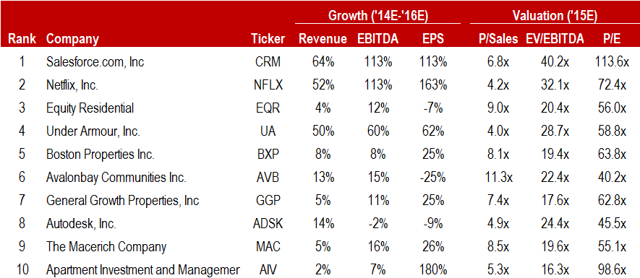Joe Donovan for Digital Trends writes: Tracking your finances is pretty much mandatory in this day and age, and though you may already use a slew of methods for monitoring your expenses, there’s certainly no shortage of quality software designed for staying in the black and providing you with a detailed report from month to month, or even day to day. Moreover, though most freemium software excels when it comes to barebones budget planning, and provides simple, yet valuable analysis of your spending habits.
Here are our picks for the best personal finance software on the market.
Intuit’s stalwart personal finance service has been around since 2006, quickly becoming one of the go-to apps for those who prefer checking their finances on the go. The notable company is known for additionally offering both TurboTax and the like-minded Quicken. That being the case, Mint also excels in terms of customer satisfaction and feedback. The service takes a mere second to sync with your bank account(s), allowing you view a quick snapshot of your personal finances and providing insightful analytics regarding your spending habits when it comes to food, entertainment, utilities, and other facets of your monthly budget. You can even tailor the app’s underlying budget restrictions to adhere to your own unique lifestyle, or set bill and low-balance alerts in case you often forget the due date for your gas bill is steadily approaching. Mint even tracks your aforementioned subcategories to give you an up-to-date picture regarding how much you can afford to spend on, say, gas or fast food. Downsides? The software only works in the United States and Canada, and occasionally, the app’s inability to change transaction dates can throw of your entire budget.
Level Money (Android/iOS) — Free
Simply put, Level Money displays your budget within easy-to-read charts that resemble bubbles. However, unlike Mint, Level Money doesn’t really provide analysis of your spending or any indication of what you’re spending money on. Instead, the mobile app’s streamlined interface merely provides graphs detailing your daily, weekly, and monthly allowances. Level Money also allows you to increase or decrease your daily allowance, though its hands-off approach to other most other facets to the problem will likely leave you wanting more. Nonetheless, the app lets you start and sync with your bank account in a matter of seconds, allowing you to edit and save bills to keep track of your monthly spending habits. It may not say how much money you have left allocated for specific purposes, but it will automatically detect income and fixed expenses to show you an accurate overview of your financial situation.
OfficeTime (Windows/Mac OS X/iOS) — $47
OfficeTime isn’t necessarily designed for the everyday individual. The software works best for freelancers and businesses owners who need to track billable hours and oversee project budgets, providing you with a simple means of keeping track of your day-to-day activities and plugging in your project expenses. Summary tools also outline the total cost and time of particular projects, and you can set hourly rates or export data and project invoices to dedicated programs such as Excel or Numbers. You can even combine synced data from various project participants to create cross-team reports and monitor which reports are over budget. The software doesn’t offer much in the way of budgeting, but it’s a great way of simplifying the daunting task of recording hours and adhering to a strict project budget. OfficeTime also organizes all of your work by date, and once it collects all of the necessary information, sends a bill to your clients via email.
AceMoney (Windows/Mac OS X/Linux) — $50
We admit, Ace Money still looks as if it was inspired by Windows 1998. However, though there are certainly more visually-appealing tools available, AceMoney remains a standout in the field of finance software given its robust feature set and across-the-board compatibility with operating systems and foreign currencies. The desktop app can automatically sync with multiple checking and savings accounts, with additional budgeting options available for selecting from 100 predefined spending categories when it comes time to view your financial summary. Furthermore, AceMoney supports more than 100 different currencies, provides a built-in loan calculator and password protection, and allows you to import older finance data from personal assistants such as MS Money and Quicken. What’s more, the program lets you set up automatic reminders so you’ll never miss a bill, while categorizing every expenditure to provide you with up-to-data account information. And who doesn’t like comprehensive tech support and a lifetime of instant updates.
YNAB (Windows/Mac OS X/Android/iOS) — $60
YNAB, or You Need a Budget, is specifically designed to help you become financially literate — err, more or less. As the name implies, the software provides tutorials on a variety of different financial topics designed to help better your understand of your spending and budging habits. For instance, you can view tutorial specifically designed to help you live off of last month’s paycheck or “save money for a rainy day.” It’s valuable advice, especially when pair with laudable mobile apps that provide updated snapshots of your finances, such as Level Money and Mint. Though the software doesn’t really go into depth about investments given its primary task is to help users break the paycheck-to-paycheck cycle, it does automatically link to your bank account so you’ll never have to manually enter expense reports. It also categorizes your expenses — meaning you’ll always know before you go over budget — it is often available on Steam for a mere fraction of the cost.
Honorable Mention
Not exactly personal finance software, but Google Wallet is still a worthwhile tool for settling up with friends and select businesses. The allows you to pay or request funds from anyone with a valid email address within the United States. Moreover, once you’ve received your free Google Wallet Card, you can view your purchase history and spend your Wallet Balance as if it was a commonplace debit or credit card.





